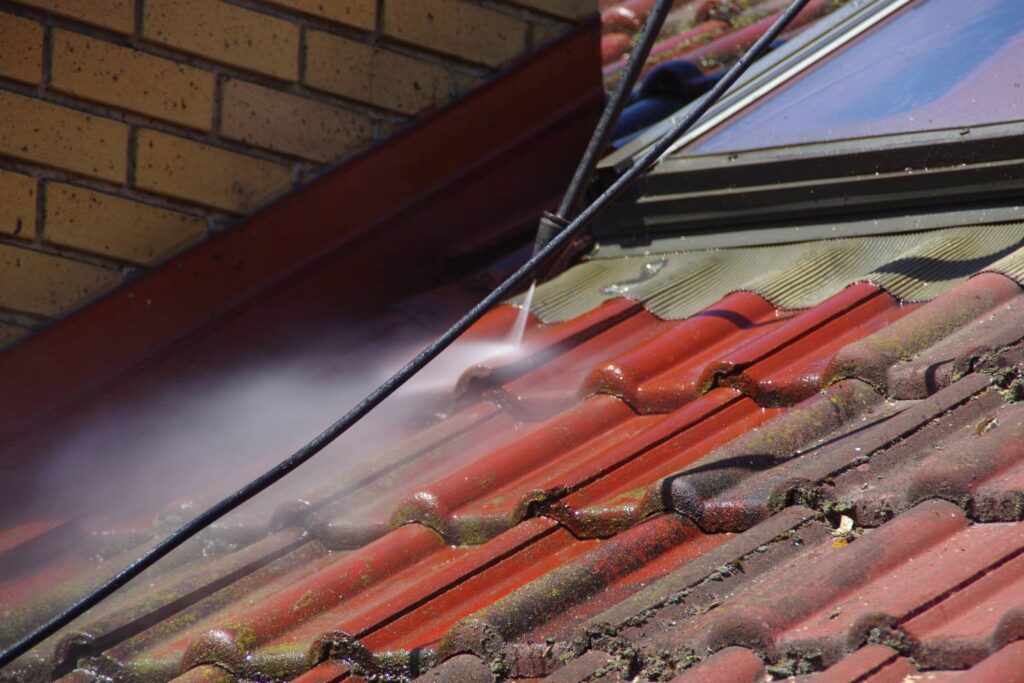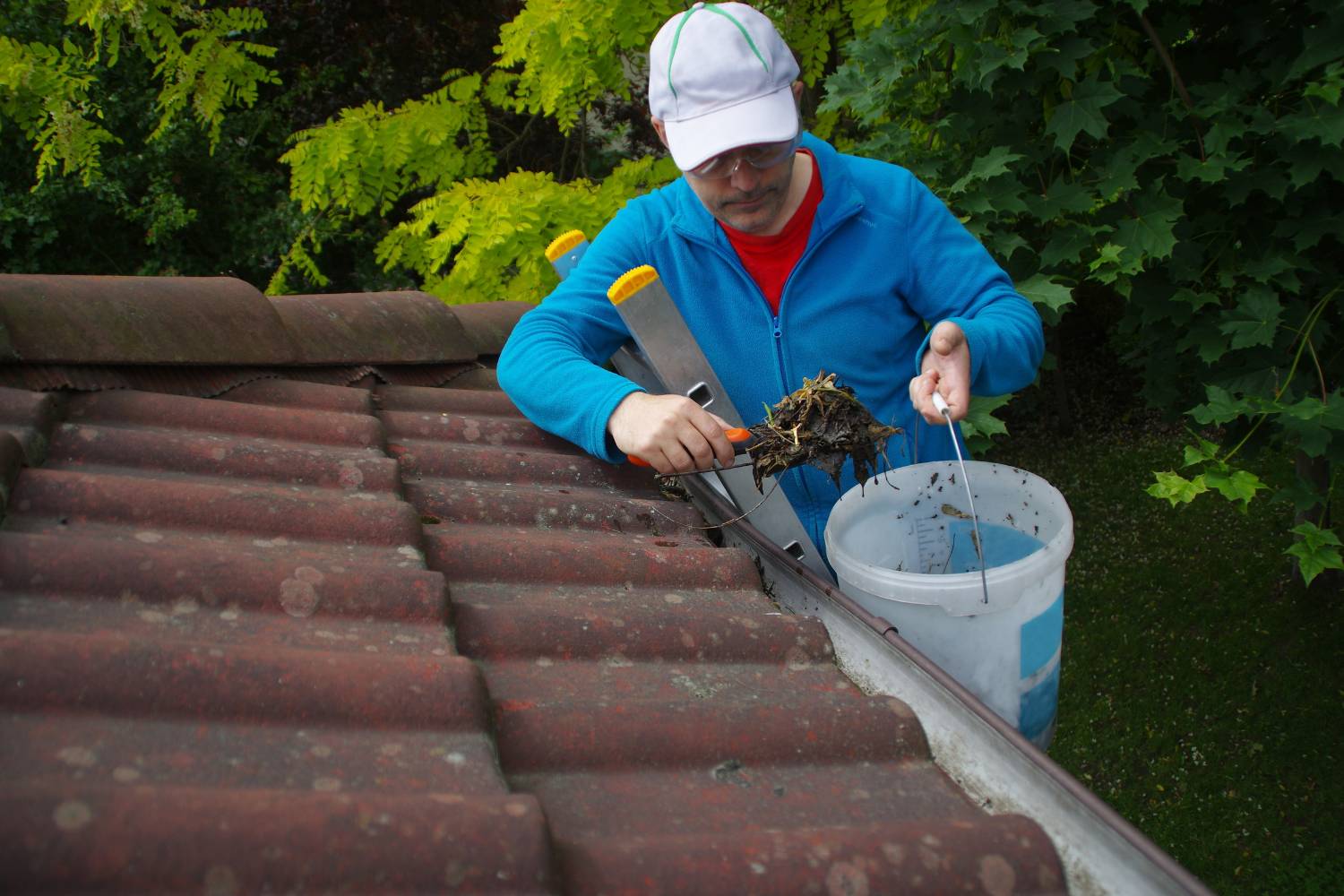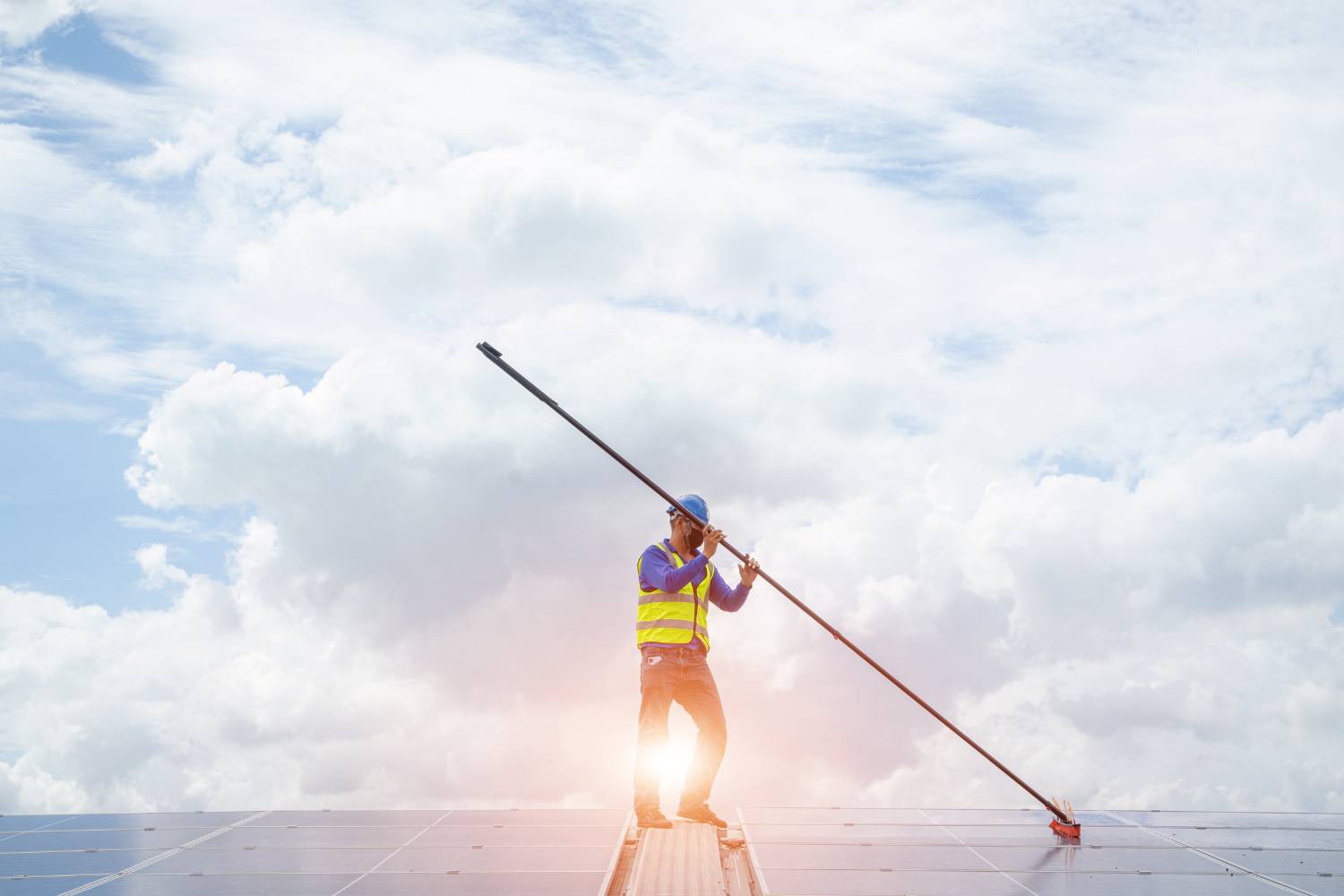Regular upkeep is crucial for several reasons. It not only ensures your roof looks its best but also helps prevent expensive damage and extends the lifespan of your roofing materials.
Exploring various cleaning techniques aims to equip you with the knowledge and tools needed for effective roof maintenance. This will thoroughly examine the most effective methods for cleaning your roof. We will also emphasise the importance of consistent maintenance, which is key to maintaining your roof's aesthetic appeal, operational efficiency, and long-term durability.
Why Is Roof Cleaning Important?
Roof cleaning is a crucial yet often neglected aspect of home maintenance. It plays a significant role in preserving the aesthetic appeal, structural integrity, and overall value of a home. A clean roof not only looks good but also functions efficiently and lasts longer. Here are some of the reasons why roof cleaning is important.
Firstly, It significantly enhances the curb appeal of your home by removing dirt, debris, algae, and moss that accumulate over time, giving your property a fresh and well-maintained appearance. This is particularly advantageous if you plan to sell your home, as a clean roof can boost its market value.
Secondly, regular roof cleaning can double its lifespan by preventing moisture damage caused by algae, moss, and debris, thereby reducing the frequency and cost of roof replacements. Thirdly, it prevents structural damage by ensuring moss and algae do not lift shingles and allow water to seep into the home's structure, which can lead to leaks, rot, and extensive water damage.
Lastly, a clean roof improves energy efficiency by reflecting more sunlight and keeping your home cooler during hot months, thereby reducing cooling costs and enhancing overall energy savings.
Different Roof Types
Choosing the appropriate roofing material is a critical decision that affects your home's aesthetics, durability, and maintenance needs. Different roofing materials offer distinct benefits and require specific cleaning methods to maintain their appearance and longevity. Here, we explore various roof types and emphasise the importance of selecting the right cleaning technique for each material.
- Asphalt shingles are widely favored due to their affordability and ease of installation, available in numerous colors and styles to match different home designs. They are cost-effective, durable, and relatively simple to replace or repair. Cleaning asphalt shingles involves using a solution of water and mild bleach or roof cleaning products to remove moss and algae, avoiding high-pressure washers as they can cause damage.
- Wood shingles and shakes, typically made from cedar, redwood, or pine, offer a natural and rustic appearance that enhances the character of any home. They are environmentally friendly, provide excellent insulation, and are aesthetically pleasing. Cleaning should be done gently with mild detergents and water to prevent mould, mildew, and insect damage, and high-pressure washing should be avoided to protect the wood's integrity.
- Metal roofs, crafted from materials such as steel, aluminium, copper, or zinc, are known for their strength and longevity. They are long-lasting, energy-efficient, low maintenance, and recyclable. Cleaning involves using a mixture of detergent and water, avoiding abrasive cleaners that can scratch or tarnish the surface, and regular inspections for rust or corrosion are recommended.
- Common in Mediterranean-style architecture, clay and concrete tiles are heavy yet extremely durable, providing a unique and stylish look. They are fire-resistant, long-lasting, and available in a variety of colours and styles. Cleaning should be done with a soft brush and water, being cautious not to crack them. Due to their weight and fragility, professional cleaning might be the best option.
- Slate roofs, made from natural stone, offer an elegant and sophisticated appearance. They are highly durable, fire-resistant, and boast an incredibly long lifespan. Cleaning should be done gently with water and a soft brush, avoiding walking on the roof to prevent breaking the tiles, and professional inspections are advisable to ensure their longevity.
- Synthetic roofing materials replicate the look of natural materials like wood, slate, or tile, using plastic, rubber, or polymer composites. They are lightweight, durable, and often more affordable than natural alternatives. Cleaning involves using mild detergents and water, and these roofs are generally low-maintenance but should be checked regularly for any signs of damage or wear.
Importance of Choosing the Right Cleaning Method
Selecting the appropriate cleaning method for your roofing material is crucial for several reasons. Material preservation is important as the wrong cleaning techniques or harsh chemicals can damage roofing materials, leading to costly repairs or replacements.
Safety is another consideration since certain materials, such as clay tiles or slate, can be slippery and fragile; using the right cleaning method ensures the safety of both the roof and the cleaner. Proper cleaning also maintains the roof's appearance, enhancing the home's overall curb appeal. Regular, appropriate cleaning prevents the buildup of moss, algae, and debris, which can degrade roofing materials over time, ensuring the roof's longevity.
Best Roof Cleaning Methods
Pressure Washing
Pressure washing is an effective and quick method for cleaning roofs. It's particularly good for removing tough stains, moss, and debris, and it works on various roof types like asphalt, tile, and metal. However, it does come with some risks.
High pressure can damage shingles by stripping away their protective granules, and incorrect use can cause water to infiltrate the roof, leading to leaks and water damage. Additionally, handling a pressure washer on a roof can be dangerous.
To safely use a pressure washer on your roof, follow these best practices: use a low-pressure setting to avoid damage, select a fan nozzle to spread the water over a larger area, maintain at least 12 inches of distance from the roof surface, and always start washing from the top of the roof to prevent water from getting underneath the shingles.
Consider using biodegradable cleaning solutions to help break down stains and biological growth, allowing you to use even lower pressure settings. Finally, prioritise safety by using a harness, securing your ladder, and having someone assist you. If you are uncomfortable or inexperienced with pressure washing, it may be best to hire a professional.
Soft Washing
Soft washing is a gentle roof cleaning method using low-pressure water and special cleaning solutions to remove dirt, algae, and moss. Unlike pressure washing, which uses high-pressure water, soft washing relies on chemical agents to clean surfaces.
Soft washing is beneficial because it is gentle on roof materials, effectively kills and prevents the regrowth of algae and moss, and is environmentally friendly when using biodegradable solutions. It is suitable for all roof types, especially delicate ones like asphalt shingles, slate, and cedar shakes, as it avoids the risk of damage from high pressure.
Chemical Cleaning
Chemical cleaning uses specialised solutions like sodium hypochlorite, copper sulphate, and potassium salts to remove moss, algae, and lichen from roofs. These chemicals are highly effective at killing and preventing the regrowth of these organisms.
Environmental considerations are important; use biodegradable products to minimise harm to surrounding vegetation and water sources. Always follow safety guidelines, wear protective gear, and ensure proper ventilation.
For application, mix chemicals as instructed, apply evenly with a sprayer, let sit, and then rinse thoroughly. Cover nearby plants and rinse them before and after application to prevent damage. This method efficiently keeps your roof clean and healthy.
Eco-Friendly Cleaning Solutions
Eco-friendly cleaning solutions use natural, biodegradable products like vinegar, baking soda, and plant-based soaps to clean roofs effectively without harming the environment.
These solutions offer advantages such as reduced environmental impact, safety for pets and plants, and preservation of roof materials. They are less likely to cause damage, extending the roof's lifespan.
DIY eco-friendly cleaning solutions are simple to make. For instance, mix vinegar and water or baking soda and water to clean and prevent algae and moss growth. These options are cost-effective and easy to prepare.
Using eco-friendly solutions benefits the environment and roof health by avoiding harmful chemicals and maintaining the roof's integrity. This approach ensures a sustainable, clean, and durable roof.
Conclusion
Maintaining a clean roof is essential for preserving your home's appearance, structural integrity, and the longevity of your roofing materials. Regular cleaning not only enhances curb appeal but also prevents costly damage and extends the roof's lifespan.
Different roof types, such as asphalt shingles, wood shakes, metal, clay tiles, slate, and synthetic materials, each require specific cleaning methods. Choosing the right method—whether it's pressure washing, soft washing, chemical cleaning, eco-friendly solutions, or manual cleaning—ensures effective maintenance without damaging the roof.
Implementing preventive measures like regular inspections, gutter cleaning, and installing zinc or Copper strips can further extend your roof's lifespan and reduce the need for extensive cleaning. By following these best practices, you can keep your roof in excellent condition, protect your investment, and enhance your home's overall value. Thank you for reading, and we hope these insights help you maintain a pristine and durable roof.
Frequently Asked Questions
Signs that your roof may need repair include missing or broken shingles, visible leaks or water stains on your ceiling, sagging roof sections, and the presence of mould or moss. Regular inspections, especially after severe weather, can help identify these issues early.
While minor repairs like replacing a few shingles can sometimes be done by a knowledgeable homeowner, it is generally recommended to hire a professional roofing contractor for more extensive damage. Professionals have the necessary tools, experience, and safety equipment to handle roof repairs effectively.
The cost of roof repairs can vary widely depending on the extent of the damage, the type of roofing material, and labour costs in your area. Minor repairs might cost a few hundred dollars, while major repairs or partial roof replacements can run into the thousands. It's best to get multiple estimates from reputable contractors.
The duration of roof repairs depends on the extent of the damage and the complexity of the work needed. Minor repairs might be completed in a few hours, while more extensive repairs could take several days. Weather conditions and the availability of materials can also affect the timeline.
Regular maintenance is key to preventing future roof damage. This includes cleaning gutters, trimming overhanging branches, inspecting the roof for damage after storms, and addressing small issues promptly before they become major problems. Additionally, ensuring proper ventilation and insulation can help extend the lifespan of your roof.


